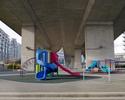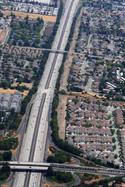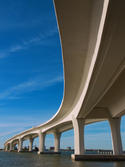Transportation
Part Two. Yesterday, in Part One, Critser discussed scientific advances in understanding air pollution. Today, he addresses the social implications.
The new science of air pollution, with its emphasis on dose-response mechanisms, may remake the traditional advocacy realm of social and environmental justice. In the past, that world has been focused on class, race and ethnicity, classic markers of inequality and vulnerability. Today, the focus is more “exposure driven.” “Dosage… may be something people who have ignored environmental justice can get their heads around,” one researcher at last month’s Environmental Epidemiology conference in Pasadena noted. “It may get people’s attention on something that affects us all.” read more »
Part One of A Two-Part Series
Not long ago, Michael Woo, a former Los Angeles city councilman and current member of the Los Angeles City Planning Commission, took up a case pending approval by that body: a mixed housing-retail development near the intersection of Cahuenga Boulevard and Riverside Drive. Like many of the remaining buildable sites in the city, the property is right next to a roaring motorway; the windows of some apartments would look right out onto the 134 Freeway. To Angelinos, who have grown up in a car culture, it was hardly a remarkable proposal. But Woo, perhaps one of the brainier members of the city’s political elite—after losing a mayoral race to Richard Riordan in the early 1990s he became a professor of public policy at University of Southern California—had a problem with it, and he couldn’t quite let it go. read more »
City officials and private business owners recently gathered to celebrate the extended holiday hours of the Metropolitan Transportation Authority (MTA) Metro Red Line train service between Hollywood and Downtown. Private businesses put up $50,000 or so to pay for the Red Line to run an extra two hours — until 3 a.m. — on weekends through December 27. The local business community also came up with private funds for free service on city-operated DASH buses that will offer connections to late-night Red Line riders and others. read more »
Rhetoric always seems to trump reality in the headline department. This has been evident as a fawning press and commentators have made the most of the decline in driving from high gas prices and the related increase in transit ridership. As gas prices rose to their above $4.00 peak, driving in the nation’s urban areas had declined 2.0 percent over a year. At the same time, transit ridership rose 3.3 percent, leading to the impression that transit ridership increases had accounted for most, if not more than the loss in driving. read more »
Stimulus fever is in the air, and with the election of Sen. Barack Obama to become the 44th US president, it’s now reaching a fever pitch. US automakers have already made the rounds on Washington DC, meeting with Congressional leadership to generate political support for another $25 billion in government subsidy to avoid bankruptcy. Now, congressional leaders and some economists are clamoring for $150 billion to $300 billion in additional stimulus to goose the national economy – all this on top of the $700 billion financial services “rescue package” passed in October. read more »
As I sit here in Beijing Capital International Airport waiting for a flight to Taiyuan, I realize something universal about people. Whether in the suburbs of Shanghai, Beijing, Wuhan, Xi’an, Shenyang, Shenzhen, Guangzhou, Nanjing or even in the historical accident of Hong Kong, some of the most beautiful single-family detached housing in the world is here. It is not extensive, because it is not affordable to the great majority of Chinese. read more »
Telecommuting — or telework — is a critical tool that can help employees, businesses and communities weather the current financial crisis, and thrive afterward. However, right now, the nation is burdened with a powerful threat to the growth of telework: the telecommuter tax. This tax is a state penalty imposed on Americans who work for employers outside their home states and sometimes telecommute. read more »
It seems very likely that a national greenhouse gas (GHG) emission reduction standard will be established by legislation in the next year. Interest groups are lining up with various proposals, some fairly benign and others potentially devastating.
One of the most frequently mentioned strategies – mandatory vehicle miles reductions – is also among the most destructive. It is predictably supported by the same interests that have pushed the anti-automobile (and anti-suburban) agenda for years, often under the moniker of “smart growth.” read more »
In the dark days following the Sept. 11, 2001, terrorist attacks on New York City and Washington, D.C., when traveler anxiety hit previously unknown levels, there developed among tourism marketers a new emphasis on targeting what was then called the “drive” market. read more »
The year I attended the University of Copenhagen as an undergraduate, I lived in a suburb north of the city and commuted to the central city via bus and rail (the famous S-trains). What a great system, I remember thinking as an impressionable ingénue (you could go anywhere, and trains were on time to the second!). When I returned as a graduate student I lived right in the city center and discovered that great public transit did not obviate the need for extensive walking (I must have worn out five pairs of shoes that year). read more »
|





















